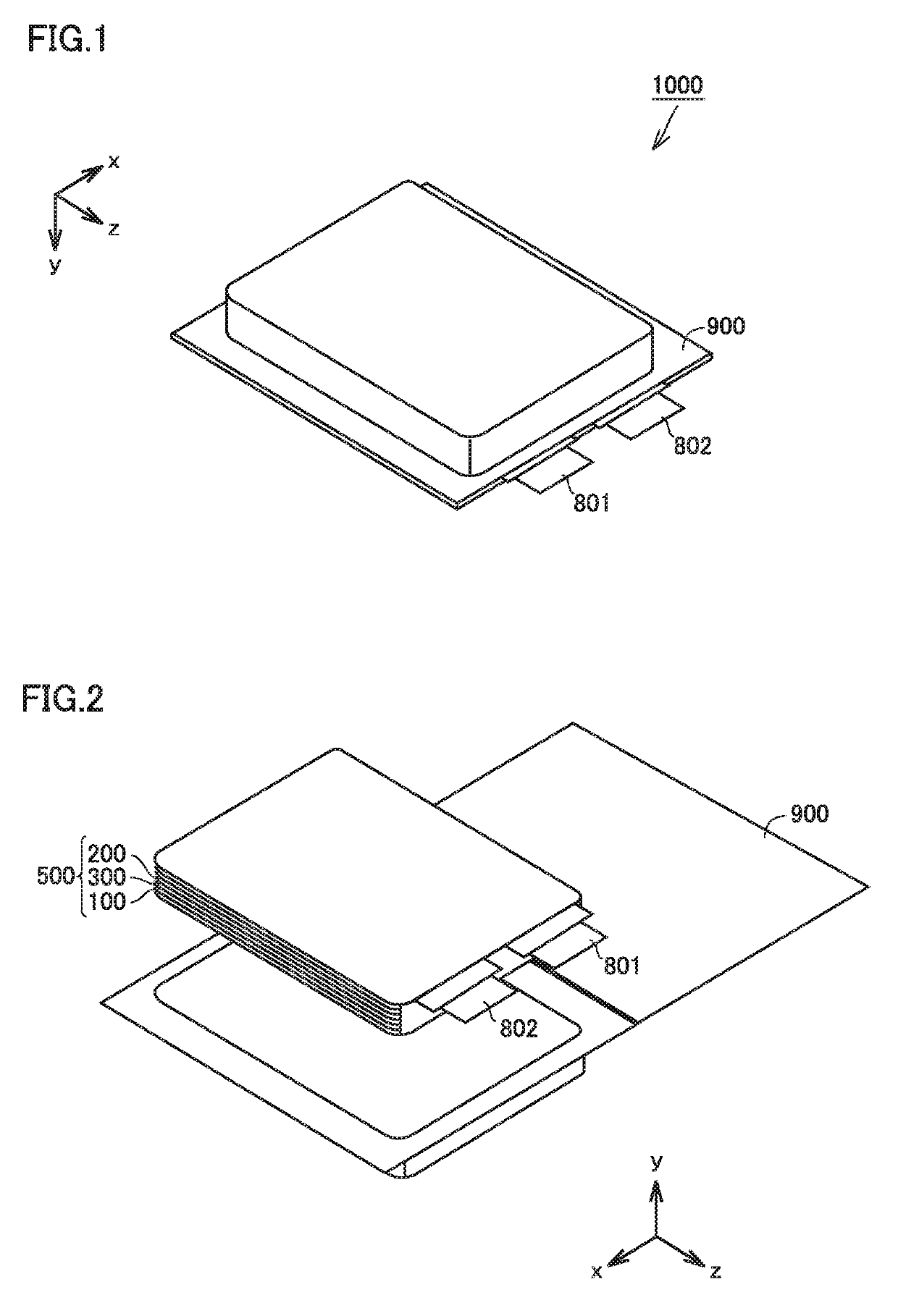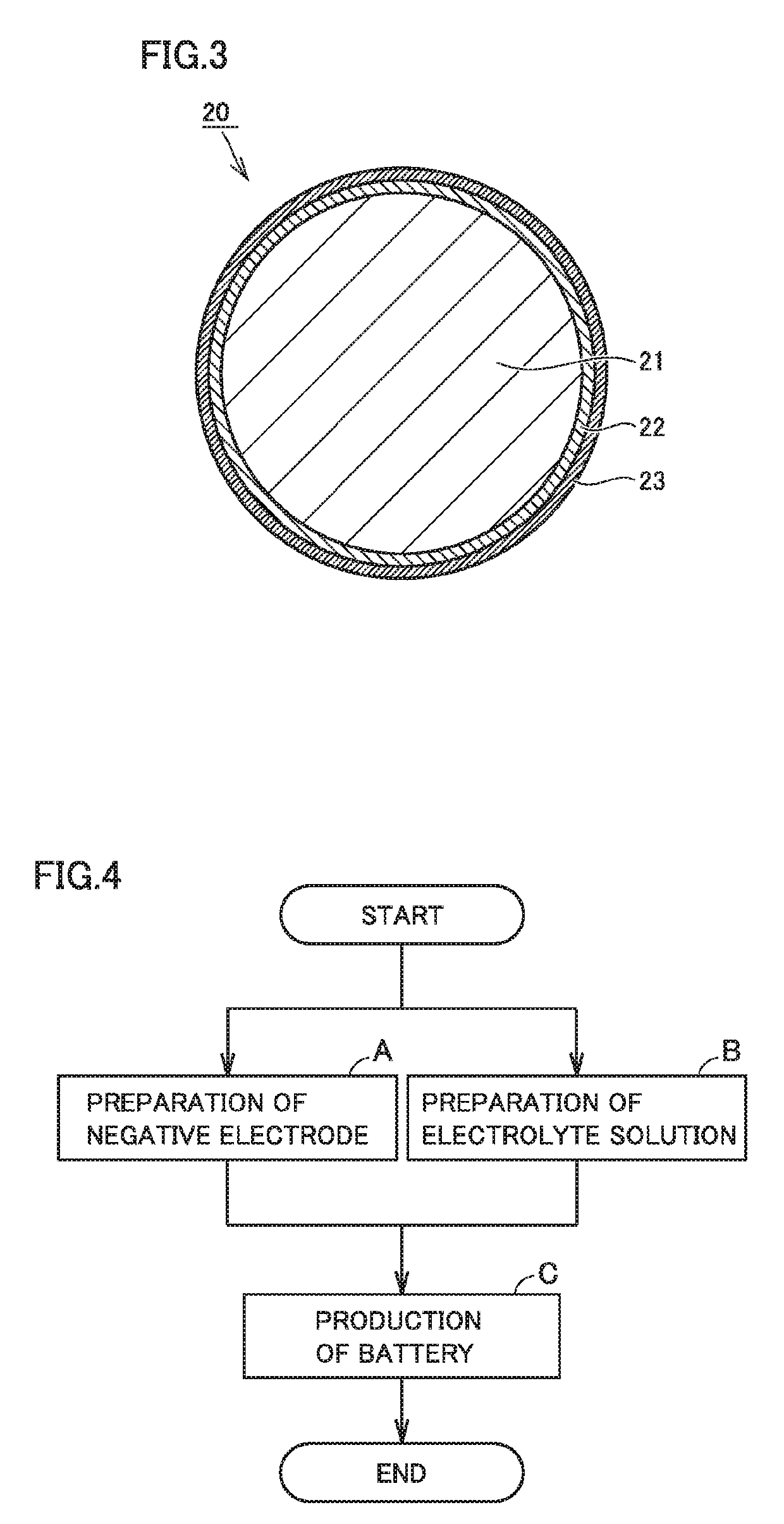Lithium-ion secondary battery and method of producing the same
a secondary battery and lithium-ion technology, applied in the field of lithium-ion secondary batteries, can solve the problems of sub>4 /sub>may be a cause of irreversible capacity loss, low cycle capacity retention, and so as to reduce reduce contact, and reduce the effect of post-high-temperature storage capacity retention
- Summary
- Abstract
- Description
- Claims
- Application Information
AI Technical Summary
Benefits of technology
Problems solved by technology
Method used
Image
Examples
example 1
[0104]>
[0105]1. Preparation of Negative Electrode Active Material Particles
[0106]As SiOx particles 21, SiO particles were prepared. The SiO particles had a composition represented by the above compositional formula (I) in which x=1. SiOx particles 21 had a D50 of about 30 μm. SiOx particles 21 were pulverized in a jet mill. After pulverization, SiOx particles 21 were classified. Thus, the D50 of SiOx particles 21 was adjusted to 10 μm.
[0107]A barrel-based DC-RF magnetron sputtering apparatus was prepared. This sputtering apparatus is designed for powder materials Into the barrel, SiOx particles 21 were loaded. Si targets were loaded. Sputtering was carried out and thereby Si layer 22 was formed on a surface of each SiOx particle 21. In other words, a surface of SiOx particle 21 was covered with Si layer 22. Thus, negative electrode active material particles 20 were prepared. The sputtering conditions were described below.
[0108]
[0109]RF power: 200 W
[0110]Sputtering duration: five hou...
example 2
[0142]Battery 1000 was produced in the same manner as in Example 1 except that the electrolyte solution contained 1 mass % VC instead of 1 mass % FEC.
example 3
[0143]Negative electrode active material particles 20 were prepared in the same manner as in Example 1 except that the sputtering duration was changed to one hour. Then, battery 1000 was produced. The thickness of Si layer 22 was estimated at 10 nm.
PUM
| Property | Measurement | Unit |
|---|---|---|
| thickness | aaaaa | aaaaa |
| thickness | aaaaa | aaaaa |
| thickness | aaaaa | aaaaa |
Abstract
Description
Claims
Application Information
 Login to View More
Login to View More - R&D
- Intellectual Property
- Life Sciences
- Materials
- Tech Scout
- Unparalleled Data Quality
- Higher Quality Content
- 60% Fewer Hallucinations
Browse by: Latest US Patents, China's latest patents, Technical Efficacy Thesaurus, Application Domain, Technology Topic, Popular Technical Reports.
© 2025 PatSnap. All rights reserved.Legal|Privacy policy|Modern Slavery Act Transparency Statement|Sitemap|About US| Contact US: help@patsnap.com


